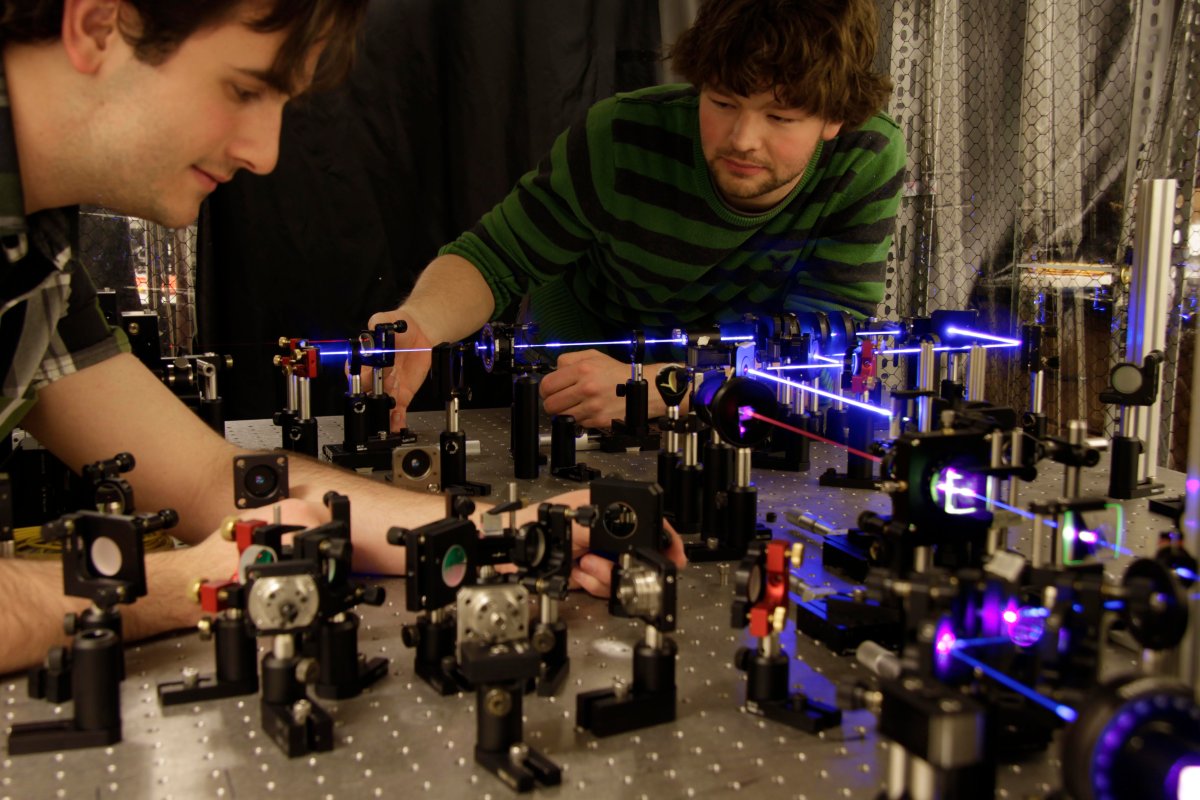
New research demonstrates that particles move similar to billiard balls rolling along a table. Instead of the “realistic” path that you’re probably imagining though, the particles actually move in a fashion that has been termed “surrealistic.”
“Spooky Action”
Canadian Institute for Advanced Research (CIFAR) Senior Fellow Aephraim Steinberg (University of Toronto) and his colleagues tracked the trajectories of photons as the particles were fired through one of two slits and onto a screen. For decades physicists thought they could never know which slit a particular photon went through—any attempted measurement stops it in its tracks.
In 2011, though, Steinberg tracked the trajectories of photons using a series of “weak” measurements, gentle enough not to disturb their position, and then averaging out the information. This method showed trajectories that looked similar to classical ones—like those of balls flying through the air.
However, some physicists were not convinced by the result. Quantum mechanics also tells us that two particles can be entangled, so that a measurement of one particle affects the other. The critics complained that in some cases, a measurement of one particle would lead to an incorrect prediction of the trajectory of the entangled particle. They coined the term “surreal trajectories” to describe them.
Well, Steinberg’s team was able to do the experiment with entangled photons and show how the surreal behavior is caused by the influence of the other particle. They first entangled two photons, then sent one of the pair through the regular two-slit apparatus, and the other through an apparatus that monitored polarization.
Surprisingly, the choice made by the experimenters in how to measure the polarization determined which slit the first photon went through—as if interfering with one particle caused the other to change direction instantaneously. This bizarre phenomenon is exactly why Einstein dubbed the movement “spooky action.”
This is the first time that this action has been seen in such a direct fashion.

Different Pictures
The results of Steinberg’s experiment are at odds with a long-standing criticism of an interpretation of quantum mechanics called the De Broglie-Bohm theory, which attempts to resolve the quantum uncertainty principle. An old sticking point in quantum mechanics, the uncertainty principle holds that a particle’s position and momentum can never be known at the same time—only one or the other can be known, and it means that any attempt to measure a particle inevitably disturbs it and so renders the measurement meaningless.
The standard interpretation of quantum mechanics argues that this uncertainty means a particle’s position can only be described by a wave function, or a cloud of probable positions; when once the particle’s position is measured, these probabilities “collapse” into its actual location. In contrast, the De Broglie-Bohm theory maintains that particles do have an objective position, but are accompanied by a probabilistic “pilot wave.”
It’s all very obscure and mysterious, but the gist is that opponents of this interpretation claimed that it did not realistically explain the behavior of entangled photons. But the experimental evidence suggests both interpretations are correct.
For Steinberg, the results are important because they give us a way of visualizing quantum mechanics that’s just as valid as the standard interpretation, and perhaps more intuitive.
“I’m less interested in focusing on the philosophical question of what’s ‘really’ out there. I think the fruitful question is more down to earth. Rather than thinking about different metaphysical interpretations, I would phrase it in terms of having different pictures. Different pictures can be useful. They can help shape better intuitions.”